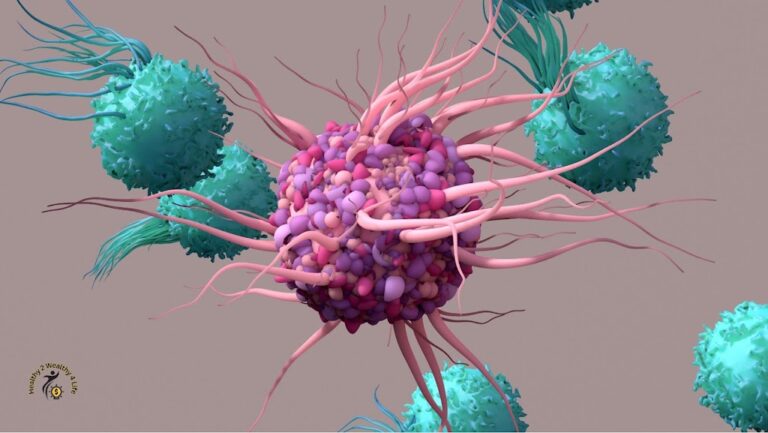Understanding Neurodegenerative Diseases | Causes, Symptoms, and Treatment Options
%20(1).png) |
| Understanding Neurodegenerative Diseases | Causes, Symptoms, and Treatment Options |
Neurodegenerative Diseases: An Overview
Neurodegenerative diseases are a group of disorders characterized by the progressive degeneration of nerve cells in the brain and nervous system. These diseases often result in a decline in cognitive and motor functions, leading to significant impairments in daily life. Some of the most prevalent neurodegenerative diseases include Alzheimer’s disease, Parkinson’s disease, Amyotrophic Lateral Sclerosis (ALS), and Huntington’s disease.
Causes and Underlying Mechanisms
The exact causes of neurodegenerative diseases are multifaceted and not fully understood. However, research indicates that a combination of genetic, environmental, and lifestyle factors contributes to their development. Abnormal protein accumulation, oxidative stress, mitochondrial dysfunction, and inflammation have all been implicated in the progression of these diseases.
Genetic Predisposition
A substantial body of evidence suggests that genetics plays a crucial role in the susceptibility to neurodegenerative diseases. Mutations in specific genes can increase the risk of developing these conditions. For instance, mutations in the APP, PSEN1, and PSEN2 genes are associated with early-onset Alzheimer’s disease, while mutations in the LRRK2 gene are linked to Parkinson’s disease.
Protein Aggregation
The aggregation of misfolded proteins is a hallmark of many neurodegenerative diseases. In Alzheimer’s disease, the accumulation of beta-amyloid plaques and tau tangles disrupts neural communication and contributes to cognitive decline. Similarly, in Parkinson’s disease, the aggregation of alpha-synuclein protein leads to the formation of Lewy bodies, causing the death of dopamine-producing neurons.
Oxidative Stress and Mitochondrial Dysfunction
Oxidative stress, resulting from an imbalance between free radicals and antioxidants, is a common factor in neurodegeneration. Additionally, impaired mitochondrial function, responsible for energy production in cells, can lead to neuronal degeneration. These factors create a vicious cycle, further exacerbating the progression of the diseases.
Recognizing Symptoms and Early Detection
Detecting neurodegenerative diseases in their early stages is crucial for implementing effective interventions. The symptoms vary based on the specific disease but often include cognitive decline, motor disturbances, mood changes, and difficulties with daily activities. Regular cognitive assessments, neurological examinations, and advanced imaging techniques can aid in early diagnosis.
Exploring Treatment Options
While there is no cure for most neurodegenerative diseases, various treatment approaches aim to alleviate symptoms, slow down progression, and enhance patients’ quality of life.
Medications
Medications play a significant role in managing symptoms. For instance, cholinesterase inhibitors are prescribed for individuals with Alzheimer’s disease to improve cognitive function. Levodopa is a common drug for managing motor symptoms in Parkinson’s disease.
Therapies
Physical therapy, occupational therapy, and speech therapy can help patients maintain their independence and manage symptoms. Deep brain stimulation, a surgical procedure, is used in advanced Parkinson’s cases to regulate brain activity and improve motor control.
Lifestyle Modifications
Adopting a healthy lifestyle can have a positive impact on disease progression. Regular exercise, a balanced diet rich in antioxidants, stress management, and staying mentally active are recommended.
The Road Ahead: Research and Hope
Ongoing research efforts are dedicated to unraveling the intricate mechanisms of neurodegenerative diseases and developing innovative treatments. Advances in genetics, neuroscience, and technology offer promising avenues for better understanding and managing these conditions.
Conclusion
In conclusion, neurodegenerative diseases pose complex challenges to individuals and society as a whole. By understanding their underlying causes, recognizing early symptoms, and exploring available treatment options, we can make informed decisions that lead to improved patient outcomes and a better quality of life. Stay informed with our reliable resources as we continue to delve into the depths of neurodegenerative research and care.
FAQs – Neurodegenerative Diseases
1. What are neurodegenerative diseases?
Neurodegenerative diseases are a group of disorders characterized by the progressive degeneration of nerve cells in the brain and nervous system. These diseases lead to a decline in cognitive, motor, and sometimes even behavioral functions.
2. What causes neurodegenerative diseases?
The causes of neurodegenerative diseases are complex and often involve a combination of genetic predisposition, environmental factors, and lifestyle choices. Abnormal protein aggregation, oxidative stress, and mitochondrial dysfunction are among the underlying mechanisms.
3. What are some common examples of neurodegenerative diseases?
Common neurodegenerative diseases include Alzheimer’s disease, Parkinson’s disease, Amyotrophic Lateral Sclerosis (ALS), and Huntington’s disease. Each of these conditions has distinct symptoms and characteristics.
4. Is there a genetic component to these diseases?
Yes, genetics plays a significant role in the development of neurodegenerative diseases. Mutations in specific genes can increase the risk of certain conditions. For example, mutations in the LRRK2 gene are associated with Parkinson’s disease.
5. What are the symptoms of neurodegenerative diseases?
Symptoms vary based on the specific disease but often include memory loss, cognitive decline, motor disturbances, tremors, difficulty speaking or swallowing, and changes in mood or behavior.
6. Can neurodegenerative diseases be cured?
Currently, there is no cure for most neurodegenerative diseases. However, various treatment approaches focus on managing symptoms, slowing down progression, and improving the patient’s quality of life.
7. What treatment options are available?
Treatment options include medications to manage symptoms (e.g., cholinesterase inhibitors for Alzheimer’s, levodopa for Parkinson’s), therapies (e.g., physical therapy, deep brain stimulation), and lifestyle modifications (e.g., exercise, balanced diet).
8. How are these diseases diagnosed?
Diagnosis often involves a combination of cognitive assessments, neurological examinations, and advanced imaging techniques such as MRI and PET scans. Early detection is crucial for effective intervention.
9. What is the role of research in neurodegenerative diseases?
Research is critical for understanding the complex mechanisms of these diseases and developing innovative treatments. Advances in genetics and neuroscience offer hope for improved management and potential future cures.
10. How can individuals reduce their risk of neurodegenerative diseases?
While genetics plays a role, adopting a healthy lifestyle can help reduce the risk. Regular exercise, a balanced diet rich in antioxidants, mental stimulation, and stress management are recommended strategies.
11. How can I stay informed about the latest developments in neurodegenerative research?
Keep up with reliable resources and organizations dedicated to neurodegenerative research. Regularly reading reputable medical journals and attending seminars can provide valuable insights into ongoing advancements.
12. Are there support systems for individuals and families affected by these diseases?
Yes, there are numerous support groups, online communities, and organizations that offer resources, information, and emotional support for individuals and families dealing with neurodegenerative diseases.
13. Can neurodegenerative diseases be prevented?
While complete prevention might not be possible, adopting a healthy lifestyle, staying mentally and socially active, and managing underlying health conditions can contribute to reducing the risk of developing these diseases.
14. How can I contribute to the research and awareness of neurodegenerative diseases?
Participating in clinical trials, donating to research organizations, and spreading awareness through social media and local events are some ways to contribute to the cause.
Remember that information provided here is for informational purposes only, and it’s always recommended to consult with medical professionals for accurate and personalized advice.
15.How does exercise help to prevent neurodegenerative disease?
Exercise plays a pivotal role in preventing neurodegenerative diseases through various mechanisms:
-
Neuroprotection: Physical activity promotes the production of neurotrophic factors that support the growth, survival, and function of neurons, guarding against degeneration.
-
Blood Flow and Oxygenation: Exercise enhances blood circulation, delivering oxygen and nutrients to brain cells and aiding in waste removal, reducing cellular stress.
-
Anti-Inflammatory Effects: Regular exercise helps reduce chronic inflammation, which is linked to the development of neurodegenerative diseases.
-
Stress Reduction: Physical activity reduces stress hormones, minimizing their harmful effects on brain health.
-
Neurotransmitter Balance: Exercise boosts the release of neurotransmitters like dopamine and serotonin, positively impacting mood and cognition.
-
Neurogenesis: Exercise can stimulate the generation of new neurons, enhancing brain plasticity and repair mechanisms.
-
Insulin Sensitivity: Physical activity improves insulin sensitivity, reducing the risk of conditions like type 2 diabetes, which are linked to neurodegenerative diseases.
-
Cognitive Engagement: Activities like learning new skills or dancing during exercise engage the brain, fostering cognitive resilience.
-
Mitochondrial Function: Exercise supports mitochondrial health, crucial for energy production and cellular maintenance.
-
Hormone Regulation: Regular physical activity influences hormone levels, potentially protecting against hormonal imbalances associated with neurodegenerative diseases.
16.Do neurodegenerative diseases have a cure?
17. How might the menstrual cycle play a role in the exacerbation or relief of symptoms in neurodegenerative diseases?
-
Hormonal Changes: Estrogen levels fluctuate during the menstrual cycle. Estrogen has neuroprotective effects and could potentially alleviate symptoms in some cases.
-
Symptom Aggravation: For diseases like migraine or multiple sclerosis, hormonal changes might worsen symptoms during certain phases.
-
Hormones and Inflammation: Hormones impact immune response and inflammation, affecting disease progression.
-
Medication Interaction: Hormonal changes might alter how medications for neurodegenerative diseases are metabolized, influencing their efficacy.
-
Research Needed: Understanding the complex interplay between hormones and neurodegenerative diseases requires further research.
-
18. What are the implications of the emerging research on the potential use of menstrual blood in neurodegenerative disease treatment ?
-
-
Novel Therapeutic Approach: Menstrual blood contains stem cells and regenerative factors, offering a unique avenue for developing innovative treatments.
-
Neuroregeneration: Stem cells from menstrual blood could potentially aid in regenerating damaged neurons in neurodegenerative diseases.
-
Ethical and Non-Invasive Source: Using menstrual blood is less invasive and avoids ethical concerns associated with other stem cell sources.
-
Personalized Medicine: Tailoring treatments using a patient’s own cells might enhance effectiveness and minimize immune reactions.
-
Clinical Translation: While promising, more research is needed to validate safety and efficacy before widespread clinical use.
-
Challenges: Developing standardized protocols, addressing potential risks, and ensuring consistent outcomes are challenges to overcome.
-
19. Are there any effective ways of preventing or slowing down dementia and other neurodegenerative diseases?
-
-
Healthy Lifestyle: Adopt a balanced diet, exercise regularly, manage stress, get quality sleep, and avoid smoking and excessive alcohol.
-
Cognitive Engagement: Stay mentally active through puzzles, learning new skills, and engaging hobbies.
-
Social Connections: Maintain strong social ties to stimulate cognitive functions.
-
Heart Health: Manage blood pressure, cholesterol, and diabetes, as cardiovascular health impacts brain health.
-
Brain-Healthy Diet: Consume antioxidants, omega-3 fatty acids, and foods rich in vitamins and minerals.
-
Stay Physically Active: Regular exercise supports brain health and cognitive function.
-
Regular Check-ups: Monitor blood pressure, cholesterol, and overall health regularly.
-
Mental Health: Manage depression and anxiety, as they might impact cognitive health.
-
Limit Toxins: Minimize exposure to environmental toxins and pollutants.
-
Brain Training: Engage in brain-training exercises and activities to enhance cognitive function.
-
Stay Curious: Keep learning, exploring new interests, and challenging your brain.
-
20. What is occulomics and how is it being used to detect neurodegenerative diseases?
-
Occulomics is a field focused on studying the eyes as windows to neurological health. It utilizes advanced imaging and analytics to detect subtle changes in the eyes’ structure, function, and movement patterns that might indicate neurodegenerative diseases. By examining features like retinal thickness, blood vessel patterns, and eye movement irregularities, occulomics aims to provide early and non-invasive indicators of conditions like Alzheimer’s and Parkinson’s. This emerging technology has the potential to revolutionize early disease detection and monitoring, offering insights into brain health through ocular assessment. However, further research and validation are necessary before its widespread clinical application.
-
21. What is the most common neurodegenerative disease?
-
The most common neurodegenerative disease is Alzheimer’s disease. It primarily affects memory, thinking, and behavior, gradually worsening over time. As of now, there is no cure for Alzheimer’s, and treatments focus on managing symptoms and improving quality of life. Early diagnosis and intervention are crucial for effective management.
22. Are all neurodegenerative diseases contagious?
-
-
No, neurodegenerative diseases are not contagious. They result from complex processes within the body, such as the accumulation of abnormal proteins or the degeneration of nerve cells. These conditions are not caused by pathogens like bacteria or viruses and cannot be transmitted from person to person through casual contact.
-
See Next
-




